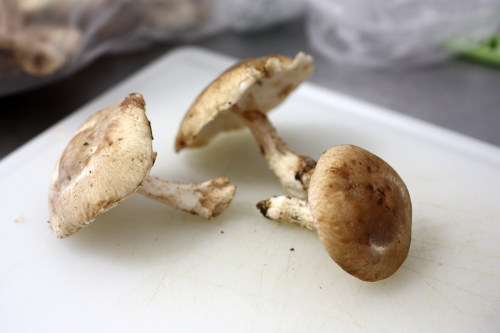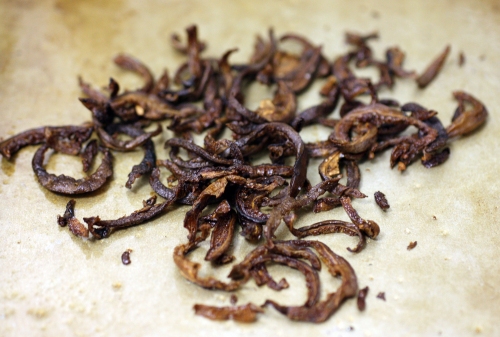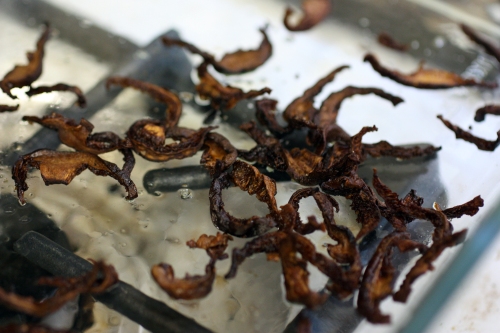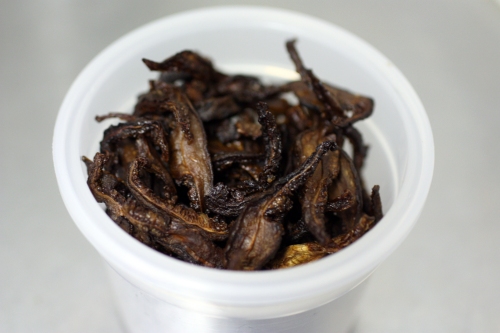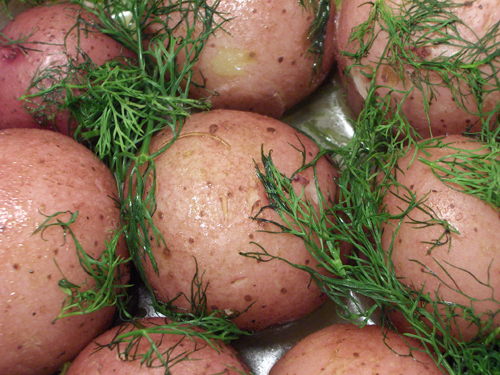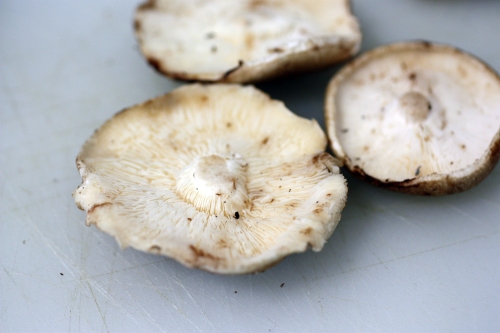 Last year, Jen and I decided to increase the vegetarianism in our diets. We didn’t cut out animal products entirely, but we stopped buying meat and most of our meals were vegetarian or vegan. Among many other reasons for making this change, we really want to shake our cooking up. While we have gone back to eating meat this year, the time we spent without it taught us a lot about what sates our appetites.
Last year, Jen and I decided to increase the vegetarianism in our diets. We didn’t cut out animal products entirely, but we stopped buying meat and most of our meals were vegetarian or vegan. Among many other reasons for making this change, we really want to shake our cooking up. While we have gone back to eating meat this year, the time we spent without it taught us a lot about what sates our appetites.
I don’t find meat to be an essential part of a meal, in general. But if you are used to cooking with it regularly, it can be a challenge creating balanced meals without it. That’s probably why so many “meat” substitutes exist. Don’t get me wrong, protein is an important nutritional element, and many touted meat substitutes such as tofu (soy), seitan (made of wheat gluten) or tempeh (another soy product) provide that nutrient in abundance. But I do find that some people (mostly non-vegetarians) get much more worked up over getting enough than the average person really needs to worry about. Grains, legumes, and many vegetables can provide just as much protein when included regularly in a diet.
Meat substitutes can be great, and I plan on talking more about them in future weeks. If you’ve read much of this blog, you have probably gathered that I prefer food to be processed as little as possible when I begin cooking with it. So I knew that no matter what we were going to be eating we would be making much of it ourselves. And that points out another problem with relying on most meat substitutes for the bulk of a vegetarian diet – they are often heavily processed and expensive.
In my new diet, I wanted to focus on fresh food, that I knew as much about as possible, and that would keep me interested and coming back for more. I also had to combat with no longer having some of my favorite foods, which was less about nutrition or cost cutting and more about giving my taste buds what they wanted. After going without bacon for some time, I did begin to crave it quite a bit. That’s when I remembered this recipe that I had come across when following a recipe for seitan bourguignon (also amazing, but we’ll get to that later).
Fresh (undried) shiitake mushrooms are used here, roasted with a bit of oil and salt, until they are crispy. It’s not just the crisping that makes them wonderful – though the texture is quite addictive. The musky, sulfuric flavor of shiitake mushrooms turns into magic when they are cooked. They take on a remarkable similarity to the meaty, salty, umami of bacon. It’s not an exact match, for sure, but it’s so close, I’d wager that someone might be fooled in a blind taste test.
I couldn’t believe how good they turned out, I made them over and over again. This is a recipe any person who avoids bacon, or meat, should have in their repertoire. The only downside is that a pound of mushrooms, once the stems are removed, and the caps are cooked, turn into maybe a cup of crunchies. At the lowest price I’ve found for fresh shiitake, that’s much steeper than the price of even good bacon.
Recipe: Roasted Shiitake Bacon
Recipe originally found on WholeLiving.com
- 1/2 to 1lb fresh shiitake mushroom caps, sliced
- 1 tbs olive oil
- light sprinkle of course salt
- Preheat oven to 350 degress.Â
- Spread mushroom slices on an oiled pan. A glass or pyrex pan cooks more slowly, a metal pan cooks more quickly. I found I liked the way they came out better on the glass pan, but they took a lot more time to crisp.Â
- Allow to roast uncovered, tossing every 10 minutes, until dry, crisp, and not burnt. The first few times you check on them, they may not seem like they will ever become crispy, but have patience. The process can take anywhere from 30 minutes to an hour depending on the amount of mushrooms, and the kind of pan.Â
- Once removed from the oven, allow to cool.Â
Enjoy anywhere you might include bacon. And even more places. Since these were more like crumbles than slices, we put them on salads, wraps, on pizza, in macaroni and cheese, and crunched as a snack. The only place they didn’t really work was as a soup topping, as they became soggy pretty quickly.
Hey! When you’re chopping up the mushrooms, don’t throw away the stems! They are full of flavor, even if the texture is unpleasant. Clean them off and use them to make a mushroom or vegetable stock. I just save them in a large zip-top bag in the freezer until I have enough to make a large pot.

